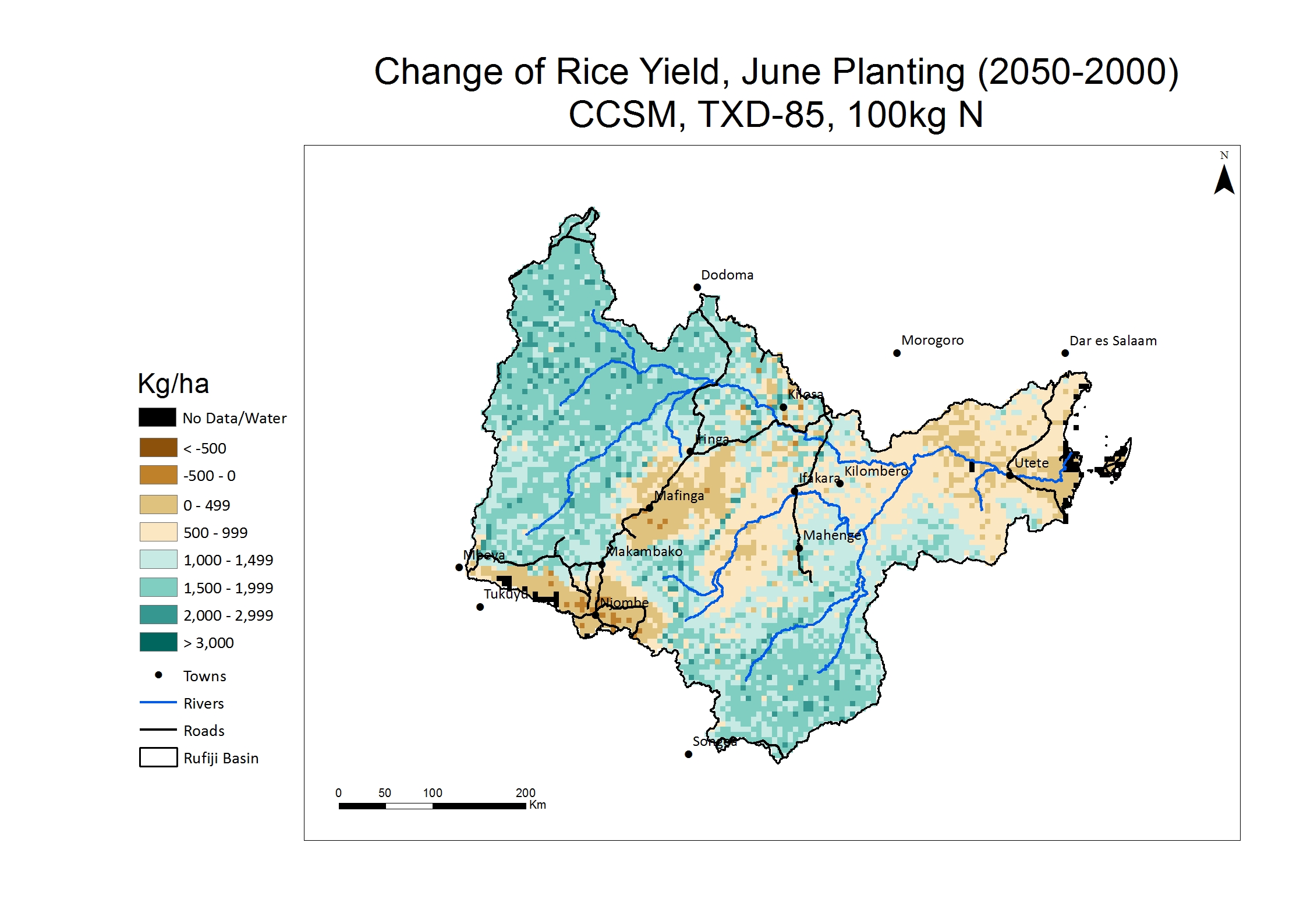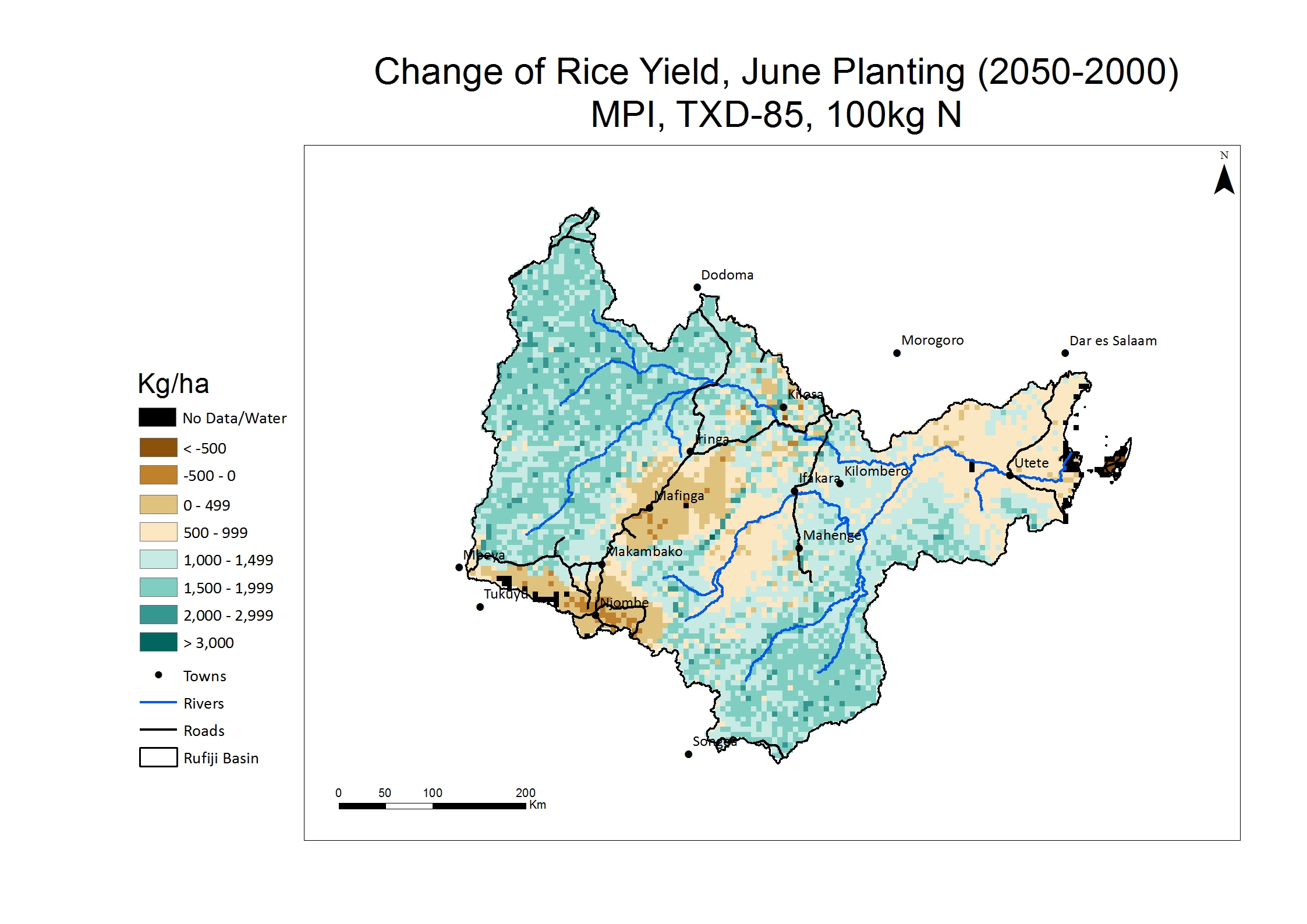Climate Effects
Introduction
During the dry, or winter season from around June to September, many farmers in the Rufiji Basin grow irrigated rice. Climate change can be expected to impact this rice production. The dry season is cooler than the rainy season and with the projected future warming temperatures, rice yields would be expected to improve. The rice simulations for the dry season assumed supplemental irrigation water as needed, so the rice would not experience water deficits. Temperature changes would have the largest impact on yields.
Current
Simulated rice yields vary greatly across the Basin for the dry season irrigated rice, from over 6,000 in the warmest areas to zero yield in the cooler zones. In general, yields are lower than during the rainy season because of the cooler temperatures suppressing yields.
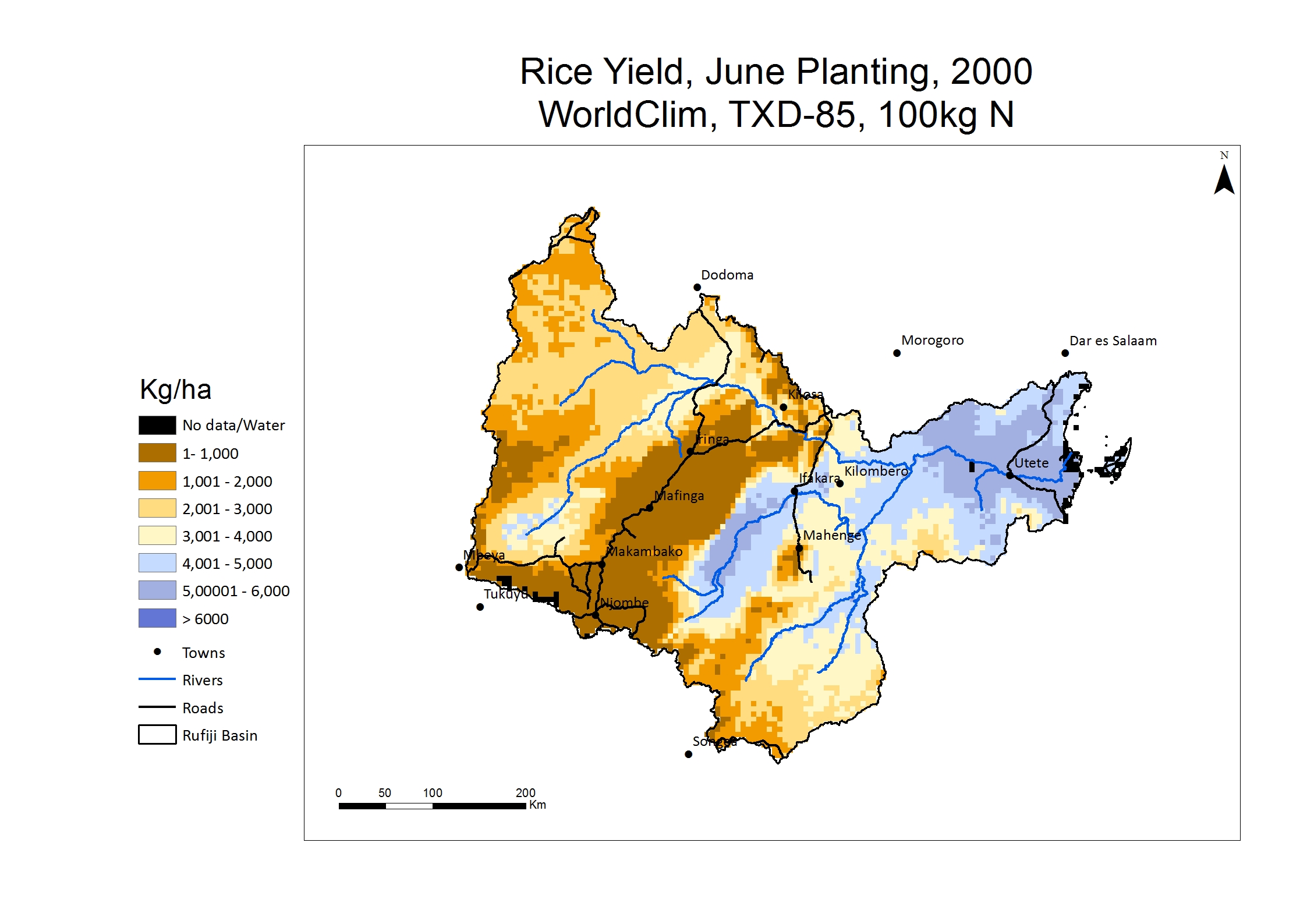
Future - 2050
The simulated yields for 2050 have the same geographical distribution, with yields closely associated with elevation. However, the yields are generally higher, with a much larger area producing yields of 5,000 kg/ha or more. The results from two GCMs are similar, since the main factor affecting yields is temperature and not precipitation.
Change
The change in yields between 2000 and 2050 for the winter, irrigated rice is mostly between 1,000 and 3,000 kg/ha. The rise in yields occurs throughout the Basin except in the coolest Highland zones, and in the warmest lowland zones near the coast. Only near the coast will the future, warmer temperatures in the winter be high enough to suppress yields. This contrasts with the impact of rising temperatures during the rainy season, when warming temperatures combined with little change in precipitation will suppress yields across a much larger area of the Basin.
Comparison
 Current
Current
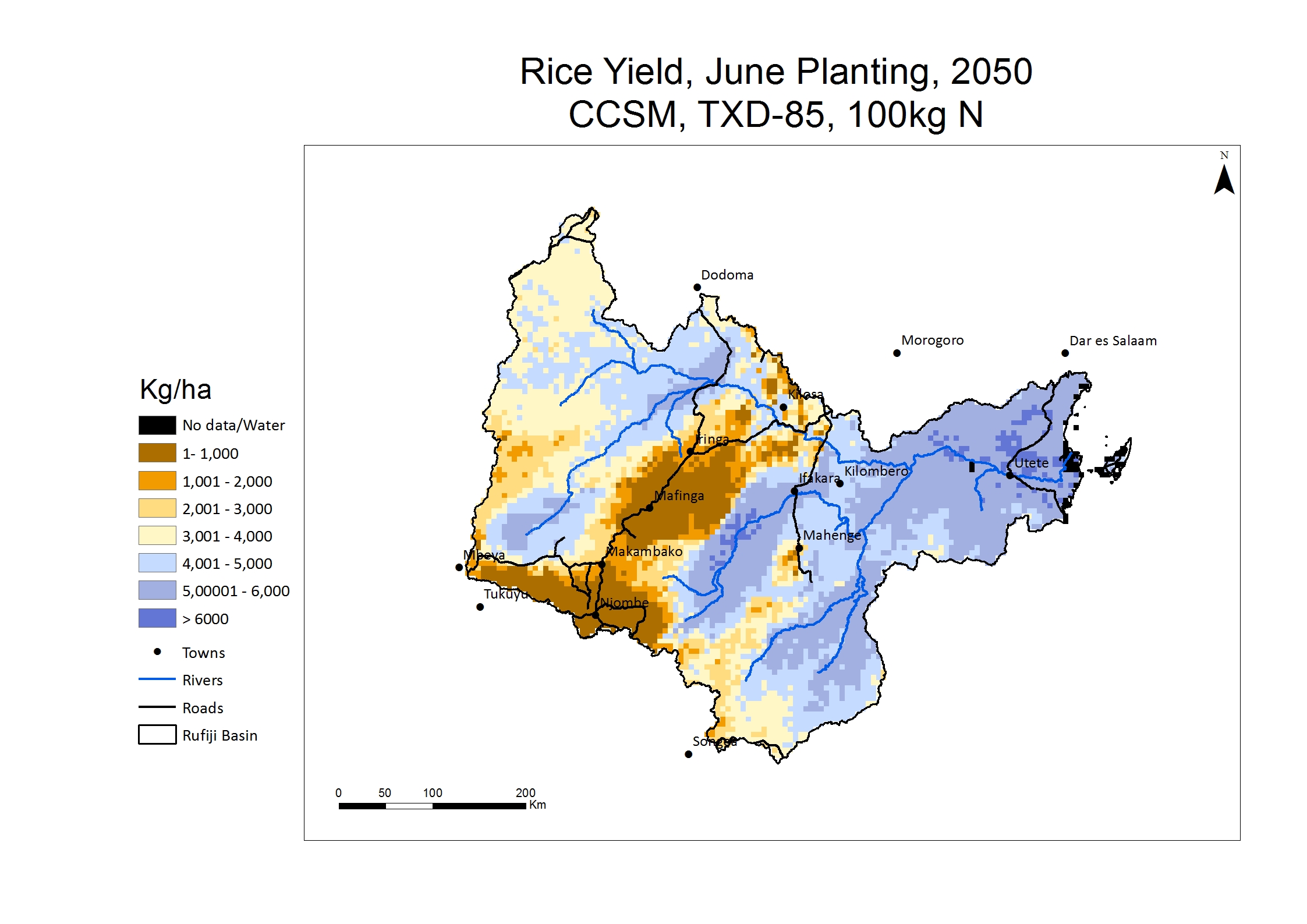
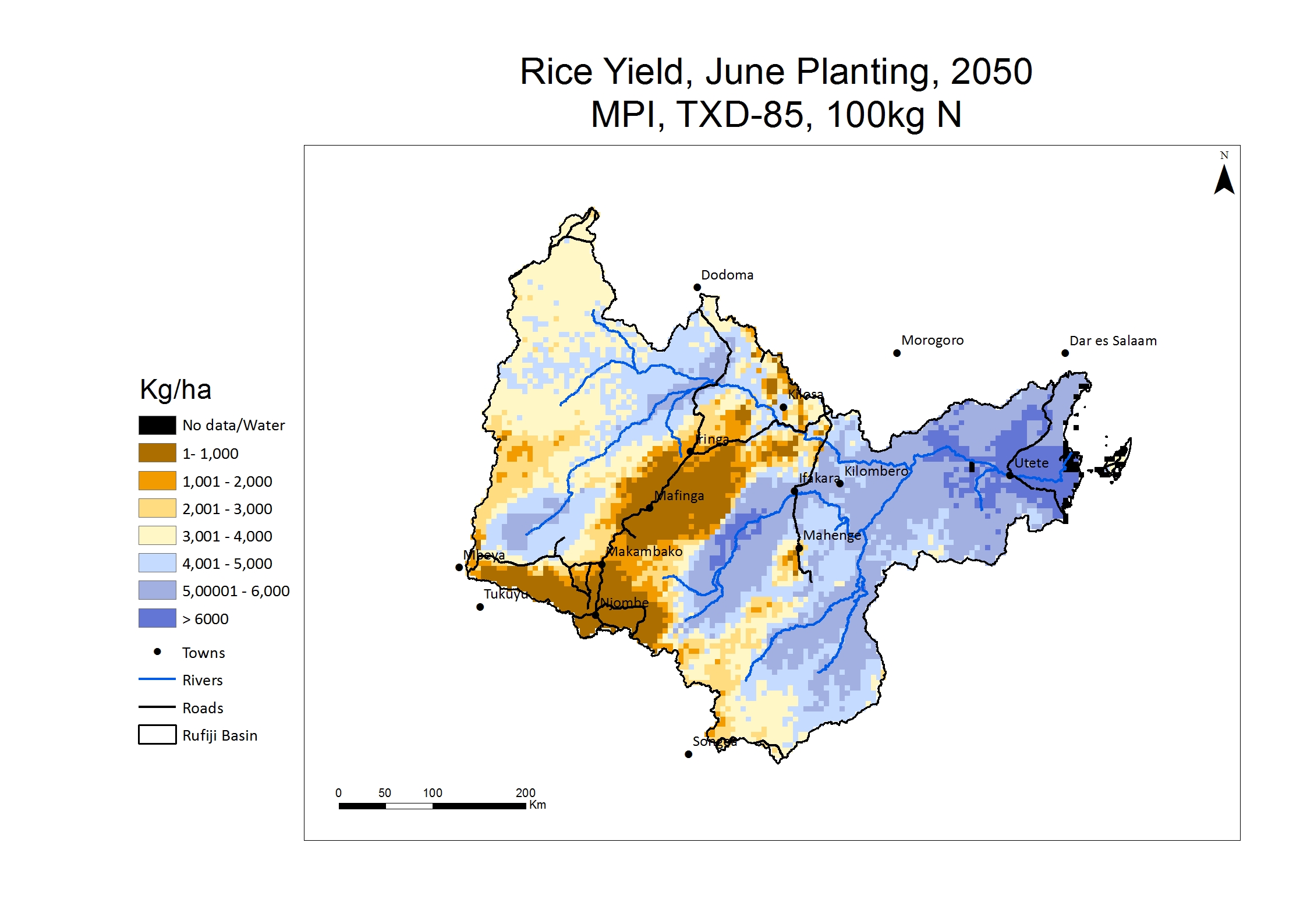
 Current
Current
